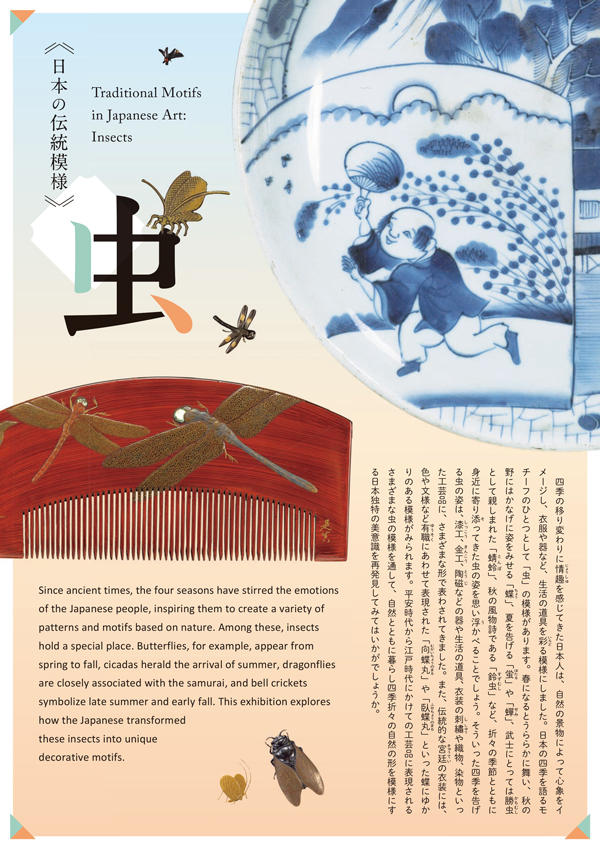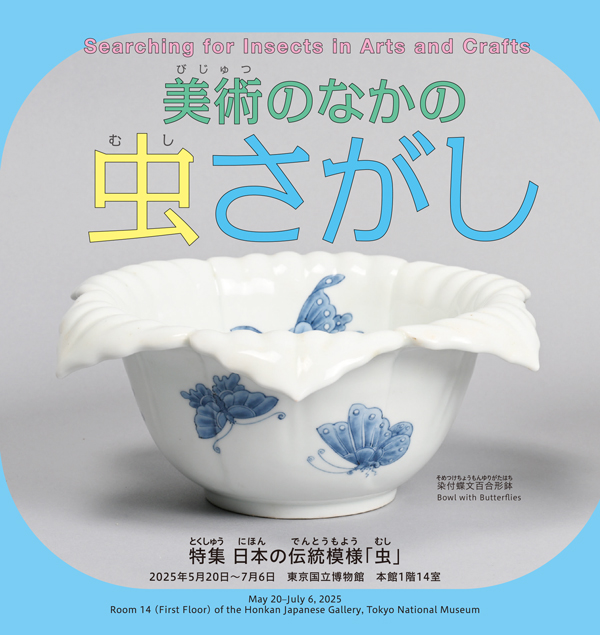本館 14室
2025年5月20日(火) ~ 2025年7月6日(日)
四季の移り変わりに情趣を感じてきた日本人は、自然の景物に心象を寄せ、衣服や器など、生活の道具を彩る模様にしました。
日本の四季を語るモチーフの1つとして「虫」の模様があります。春になるとうららかに舞い、秋の野にはかなげに姿をみせる「蝶」、夏を告げる「蛍」や「蝉」、武士にとっては勝虫 として親しまれた「蜻蛉」、秋の風物詩である「鈴虫」など、折々の季節とともに身近に寄り添ってきた虫の姿を思い浮かべることでしょう。四季を告げる虫の姿は、漆工、金工、陶磁などの器や生活の道具、衣装の刺繡や織物、染物といった工芸品に、さまざまな形で表わされてきました。また、伝統的な宮廷の衣装には、色や文様など有職に合わせて表現された「向蝶丸」や「臥蝶丸」といった蝶にゆかりのある模様がみられます。
平安時代から江戸時代にかけての工芸品に表現されるさまざまな虫の模様を通して、自然とともに暮らし四季折々の自然の形を模様にする日本独特の美意識を再発見してみてはいかがでしょうか。



